Simple Tools For Outstanding Meetings
A friend of mine in New York City recently told me about a friend of hers who can simultaneously take a stroll with her, engaged in meaningful conversation, while plugged into a phone meeting with colleagues via dangling ear bud. She would occasionally un-mute to contribute an obligatory “absolutely” or “I couldn't agree more.” We marveled at how she could “attend” a meeting while still offering a listening ear. My friend insists that her multitasking friend was as engaged in the personal conversation as anyone unplugged would be. More than a lament on excessive plugged-in-ness, it was a testament to how essentially useless these meetings must be.
Based on her friend’s disengagement, what can be assumed of her colleague’s attentiveness to the meeting? How effective are these virtual meetings?
Post-it® Brand recently conducted a study revealing that in-person meetings can feel just as unproductive. This is due to a number of factors: poor meeting management, poor note taking, and ineffective follow-up. With some creativity on the facilitator and attendee ends, there’s hope for meetings to be fruitful, concise, and truly productive.
Tools For Meeting Leaders:
The recent Post-it® Brand survey found that 51% of employees (and 64% of executives) admit they’ve forgotten the purpose of a meeting while in it. Even more (63% of employees) feel that meeting leaders frequently lose control of them.
Essentially, meetings are a type of presentation, and they can be held to the same set of standards: engagement, efficiency, take-aways, and even entertainment. We’ve all fallen victim to a presentation with too little direction, too many words, and too few action steps. With creative use of a few simple tools, it doesn’t have to be this way.
One great way to clearly present ideas when leading a meeting is by using a simple flip chart of white board and Post-it® Notes. I’ve grown fond of this method through watching famed business coach, motivational speaker, and YouTube star Brendon Burchard outline his talks on a white board, using numbered Post-it® Notes. As he moves through his talk, he tears off the large, numbered Post-it® Note to reveal his next point as he introduces it. The message sticks.
Tools For Meeting Attendees:
One of the many reasons why meetings get derailed is that attendees interject suggestions or ideas at inopportune times to not run the risk of losing the idea. There is great benefit to free-flowing ideas, as long as they’re captured. In fact, 45% of employees surveyed felt they would benefit from a single place to record everyone’s ideas.
I’ve participated in meetings that reach such a fever pitch of idea sharing that we all worry about the fate of ideas that don’t get captured. I once adopted the title of “Idea Captain," assuring everyone that I would record all ideas, good and bad, large and small. A great way to capture these is by jotting down one idea per Post-it® Note. In addition, a “Task Captain” could also be assigned, capturing each “we should” on a Post-it®Note as well.
What to do with these valuable Post-it® Notes, full of ideas that never were before, and tasks that would otherwise stay in the meeting room? At the end of each meeting, these two captains can ensure their follow-though in a number of ways:
Post-meeting, set up a Post-it® Easel Pad as a debrief board in a central location where attendees can continue to add ideas to the lot. Introverts especially are more likely to have (and share) brilliant ideas post-meeting.
Tasks captured by the “Task Captain” can land on a Post-it® Easel Pad as well. Post-meeting this tasks can stick on a central wall, awaiting adoption by willing volunteers. Volunteers can even tack their name to an idea with a Post-it® Tab, showing the team who has accepted responsibility. This is certainly more colorful and dynamic than a debrief email chain.
Both captains can bring their respective pads to the following meeting, concretely illustrating the distribution of tasks. Showing how the ideas have grown post-meeting, these will translate into further tasks up for assignment as well.
If the leader just spoke and responded to the whims of the attendees, then nothing “happened.” If no ideas or action items were recorded, then nothing changes. If there was no single landing pad for collaborative input, then nothing grows. With solutions as simple as these, there are no excuses for bad meetings!
To celebrate productivity in the workplace Post-it® Brand has also launched a digital series in partnership with Fast Company, Beside Great Leaders, featuring prominent business executives and the office professionals who keep their workplaces running smoothly. Click here to watch.
Public speakers and meeting leaders, please share in the comments if you have creatively used Post-it® Brand products or other “props” in your presentations. How will you use the examples here in your next meeting? Attended a particularly fun and productive meeting? How did they pull it off? Please share in the comments!
For additional information on Post-it® Products, including where to purchase them, visit post-it.com/office. You can also connect via Twitter, Facebook, Pinterest and Instagram.
Be sure to check out the infographic from the Post-it® Brand Workplace survey below!
(click image for larger view)
“The Post-it Brand Workplace Survey was conducted by Wakefield Research (www.wakefieldresearch.com) among 1,000 U.S. office professionals, office administrators and office managers employed full-time in 2016 using an email invitation and an online survey.”





